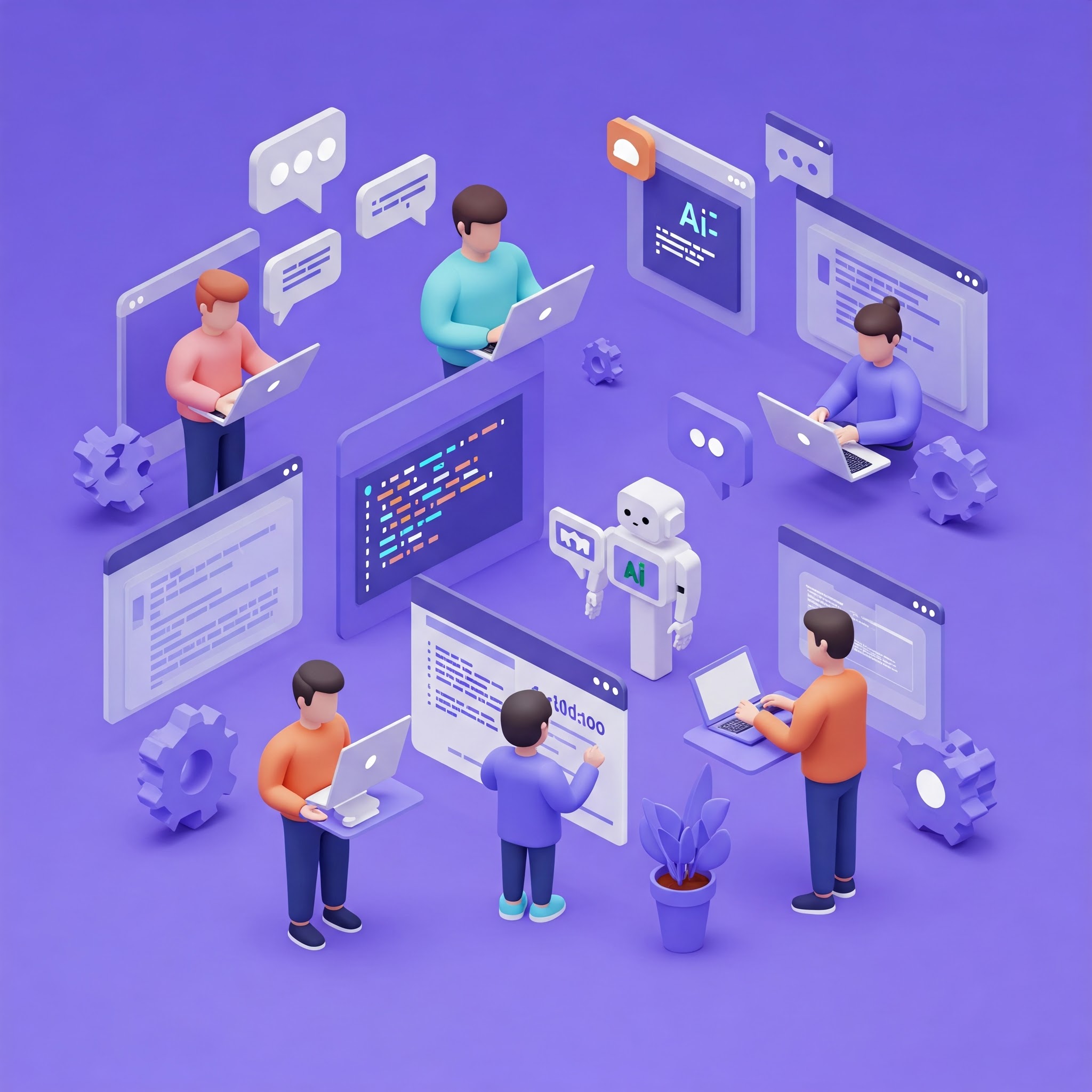
Gleam: The New Functional Language Developers Actually Want to Use
Gleam secured 70% developer admiration in Stack Overflow's 2025 survey. Explore why this functional language is winning hearts and how to get started with practical tutorials.

In the 2025 Stack Overflow Developer Survey, a newcomer shook up the “most admired” programming languages ranking. Gleam scored 70% admiration, landing second only to Rust’s 72%—impressive for a language that reached its first stable release just ten months earlier.
This isn’t just another functional programming experiment gathering dust in academia. Gleam represents a practical approach to functional programming that developers can actually adopt without sacrificing productivity or interoperability.
What Makes Gleam Different?
Gleam is a statically typed, functional programming language that compiles to both Erlang (for the BEAM virtual machine) and JavaScript. Created by Louis Pilfold in 2016, it combines the reliability of Erlang’s runtime with modern type safety and developer experience.
The language’s core philosophy centers on simplicity. Pilfold designed Gleam with a small surface area that can be learned in a single afternoon, yet powerful enough to build scalable, fault-tolerant systems.
Key Features That Set Gleam Apart
Type Safety Without Complexity: Gleam’s static type system catches errors at compile time while maintaining readable syntax. No runtime surprises, no null pointer exceptions.
BEAM Ecosystem Integration: Running on the Erlang virtual machine means access to battle-tested concurrency models and the ability to interoperate seamlessly with Erlang and Elixir libraries.
JavaScript Compilation: Unlike most BEAM languages, Gleam also compiles to JavaScript, enabling frontend development with the same functional paradigms.
Pattern Matching: Exhaustive pattern matching ensures you handle all cases, making code more reliable and refactoring safer.
Why Functional Programming Is Having a Moment
The shift toward functional programming isn’t just academic preference—it’s practical necessity. As systems grow more complex and distributed, functional programming’s emphasis on immutability and pure functions provides predictable behavior that’s easier to reason about, test, and debug.
Modern challenges favor functional approaches:
- Concurrency: Immutable data structures eliminate race conditions
- Distributed Systems: Pure functions are easier to parallelize and replicate
- Testing: Predictable inputs and outputs simplify unit testing
- Maintenance: Immutability reduces unexpected side effects
Gleam leverages the BEAM virtual machine’s concurrency model, renowned for handling millions of lightweight processes efficiently. This makes it particularly suited for building scalable, fault-tolerant systems—the same foundation that powers WhatsApp’s messaging infrastructure.
How Gleam Compares to Other Languages
Understanding Gleam’s position requires comparing it to established languages across key dimensions developers care about.
Gleam vs Elixir: The BEAM Ecosystem Battle
Both run on the BEAM virtual machine, but serve different developer needs. Elixir has proven itself in production environments with companies like Discord handling billions of messages. However, Elixir’s dynamic typing creates runtime surprises that Gleam eliminates through static analysis.
Gleam offers compile-time guarantees that catch errors before deployment—critical for teams prioritizing reliability over rapid prototyping. For teams already invested in BEAM infrastructure, Gleam provides a migration path toward stronger type safety without abandoning battle-tested concurrency models.
Gleam vs Rust: The Safety Spectrum
Rust dominates the safety conversation with its 72% Stack Overflow admiration rating, but at a cost. Rust’s learning curve is notoriously steep, with ownership concepts that can slow initial development. Research shows developers can learn Gleam’s core concepts in an afternoon versus months for Rust proficiency.
Gleam sacrifices some of Rust’s low-level control for developer velocity. Teams building web services or distributed systems often find Gleam’s safety-to-complexity ratio more practical than Rust’s maximum safety approach.
Gleam vs Go: Simplicity with Different Trade-offs
Go and Gleam both prioritize simplicity, but through different paradigms. Go’s imperative approach feels familiar to developers from C or Java backgrounds, while Gleam’s functional approach eliminates entire classes of bugs through immutability.
Go’s goroutines provide excellent concurrency, but require careful management of shared state. Gleam’s actor model, inherited from BEAM, provides concurrent programming without the cognitive overhead of manual synchronization. For teams building microservices, this architectural difference can significantly impact long-term maintainability.
Gleam vs TypeScript: Type Safety Approaches
TypeScript brought static typing to JavaScript’s massive ecosystem, but maintains JavaScript’s runtime behavior and gotchas. Gleam compiles to JavaScript with functional paradigms baked in, eliminating null/undefined errors and providing exhaustive pattern matching.
For frontend teams, this represents a fundamental choice: gradual typing with familiar semantics (TypeScript) versus functional programming with compile-time guarantees (Gleam). Early adopters report fewer production bugs with Gleam, though at the cost of smaller ecosystem and learning investment.
The Adoption Challenge: Ecosystem vs Innovation
Gleam faces the classic innovator’s dilemma. While offering compelling technical advantages, it competes against languages with massive ecosystems and established toolchains.
JavaScript/TypeScript dominates frontend development with npm’s extensive package registry. Python rules data science and AI with libraries like PyTorch and TensorFlow. Go has captured cloud-native infrastructure with Kubernetes and Docker.
Gleam’s strength lies in greenfield projects where teams can prioritize long-term maintainability over immediate ecosystem access. Early adopters report significant productivity gains once past the initial learning investment, particularly in distributed systems where BEAM’s fault tolerance provides architectural advantages.
Enterprise Considerations
For enterprise teams evaluating Gleam, several factors distinguish it from alternatives:
Hiring: Gleam developers are rare but often come from strong functional programming backgrounds (Haskell, Scala, F#). The language’s approachability means existing developers can transition relatively quickly.
Risk Management: Gleam’s compilation to both BEAM and JavaScript provides deployment flexibility. Teams can start with JavaScript deployment for familiarity, then migrate to BEAM for production scalability.
Integration: Unlike purely academic functional languages, Gleam prioritizes practical interoperability. Teams can adopt Gleam incrementally without rewriting existing infrastructure.
Why Gleam Matters for Modern Development
Gleam’s 70% admiration rating reflects more than novelty appeal. It represents a convergence of trends reshaping software development:
Multi-Language Teams: Modern development increasingly involves polyglot architectures. Gleam’s ability to compile to both BEAM and JavaScript enables teams to use one language across multiple deployment targets.
Reliability Over Speed: Teams are prioritizing system reliability over rapid feature delivery. Gleam’s compile-time guarantees align with this shift toward preventing production issues rather than quickly fixing them.
AI-Assisted Development: As AI agents become integral to development workflows, functional programming’s predictable patterns make code easier for AI systems to understand and generate reliably.
Distributed-First Architecture: Cloud-native applications require different concurrency models than traditional monoliths. Gleam’s actor model provides mental frameworks that scale better than shared-state approaches.
Open Source Gleam: Real-World Collaboration
The functional programming movement gains momentum through open source collaboration. Projects like the Gleam Standard Library and Gleam OTP demonstrate how distributed teams build robust systems using functional paradigms.
These projects showcase functional programming’s collaborative advantages: immutable data structures reduce merge conflicts, exhaustive pattern matching makes code reviews more predictable, and compile-time validation catches integration issues before they reach production.
Collaboration Tools for Functional Teams
Modern development teams—whether using Gleam, Rust, or traditional languages—require collaboration platforms that support structured code review and seamless integration across development environments. The shift toward functional programming emphasizes explicit contracts and predictable behavior, patterns that extend naturally to team collaboration workflows.
Effective collaboration platforms integrate with existing development tools (GitHub, Slack, VS Code) while supporting the structured review processes that functional programming encourages. When code follows functional principles—clear inputs, predictable outputs, explicit error handling—both human reviewers and automated systems can provide more valuable feedback.
PullFlow supports this evolution by streamlining code review processes across any tech stack. Whether teams adopt Gleam for its type safety, Go for its simplicity, or maintain existing codebases, modern collaboration tools help teams coordinate effectively while embracing new programming paradigms.
The question isn’t whether functional programming will reshape development—it’s how collaboration tools will evolve to support this transformation.
Want to streamline your team’s remote collaboration? PullFlow helps distributed development teams maintain context across GitHub and Slack, making remote mentorship more effective than ever.


